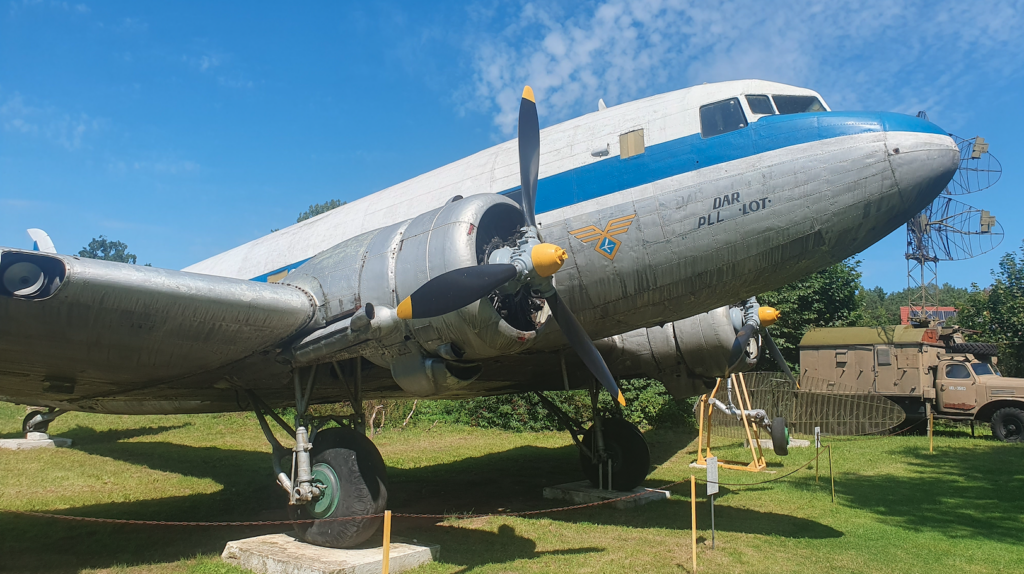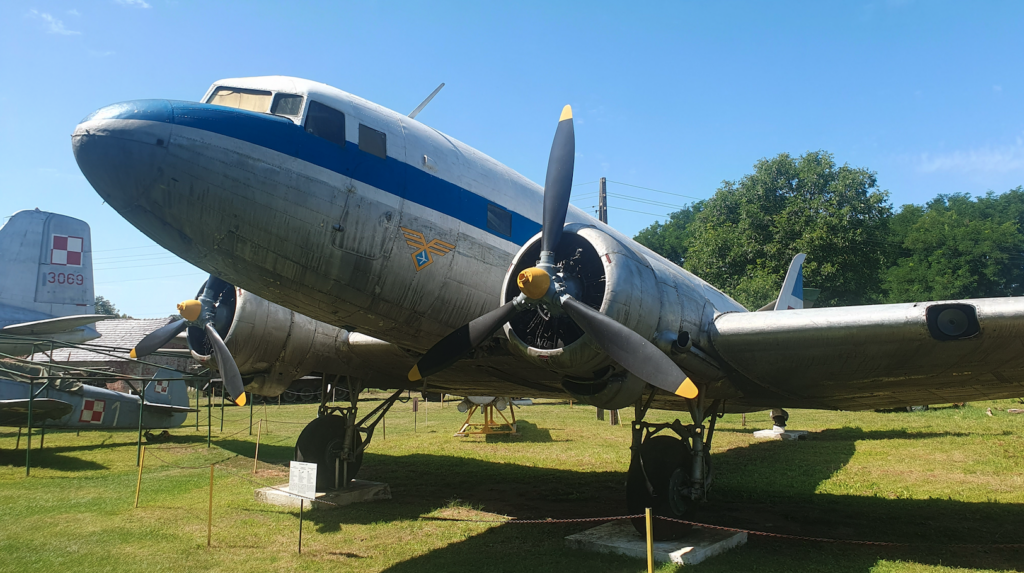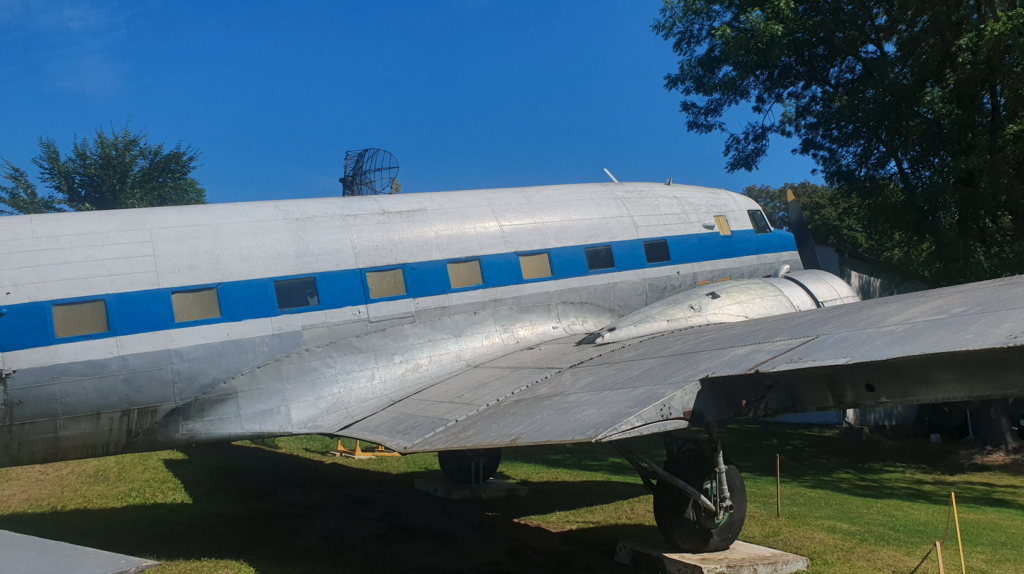Lubuskie Military Museum. 2024
Drzonów 13-09-2024
Written by Jarosław Sobociński



Visits by photojournalists and military enthusiasts visiting museums, especially those located on the outskirts, immortalizing exhibits in photos or films are usually dominated by the specific personal time possibilities of the visitors and, therefore, also by the default weather conditions that will happen on a given day. Another element that is taken into account from the point of view of photographic documentation is the period when there are no leaves on the trees yet or there are no leaves anymore – so that the lighting conditions are better, so that there are no large differences in the contrast between the sun and the shadows. But unfortunately, in such periods there are the least favorable conditions for work on outdoor equipment, maintenance, renovation, as well as cleaning or washing them. Therefore, photographs of aviation collections that are available on the Internet and were taken in autumn or early spring, present their specific aesthetic condition. The dates of taking the photographs presented on the Internet on various forums show in what period they were taken. Despite this, the presented photographs somehow define the facility in the media. Few comments contain any understanding of the topic, most are rather indifferent or negative.
The museum in Drzonów has an area of 4.5 ha, is located in a landscape park, where there are currently 30 natural monuments. A few years ago there were 32, but two large trees were blown down by storms at that time. But it is not only natural monuments that are blown down by the wind. Practically most of the aviation exhibits (and not only of course, although aviation is definitely more delicate than tanks or guns) have suffered greater or lesser damage over many years of exposure as a result of the weather conditions associated with exposure under trees.
In the landscape park, activities related to the regulation of historic park greenery, tree stands, and even tree branches themselves are very difficult. Therefore, the Museum in Drzonów is forced to operate in very difficult conditions, if we are talking about maintaining the technical condition and cleanliness of exhibits. Unfortunately, many of these historic park plantings are perennial limes and maples, birches and chestnuts. All of these trees make exhibits very dirty, especially during flowering, and later during spore maturation, and shortly afterwards from mid-August until November, flowering, with a huge mass of leaves, also carrying dirt and moisture. For over 150 exhibits in the open air, the number of substantive and technical employees employed in total is only a few people, dealing with everything, from renovation work to maintaining greenery, maintaining collection documentation, organizing events and exhibitions, acquiring new exhibits, ending with guiding tours. This is of course only a simplified view of the entirety of museum tasks.
In such specific and extremely difficult conditions, the work was carried out only outdoors (the museum does not have any place on its premises that would allow for weather-independent renovation work on large objects or specialists dealing strictly with renovation), despite their performance in the best, most favourable weather conditions – although of course far from ideal, the renovations are not durable, they last only a few to a dozen or so years and the exhibits return to their previous, poor condition. Due to the modest number of employees and weather conditions, the equipment is usually not washed or maintained in November, December, January or February, and sometimes March does not yet allow for field work due to the changeable weather (rain and very cold weather). This work is carried out for the season, starting in April, if the weather allows, and sometimes even only at the beginning of May. But this is again the flowering period, so the washed exhibits quickly become covered with dirt again. In these specific conditions, the exhibits are dirty by the trees practically on an ongoing basis, the entire season. Manual washing of exhibits is time-consuming and pressure washing is in many cases not recommended (and should not be used) so as not to damage the paint surface unnecessarily – especially in the case of aviation equipment, under high pressure aluminum is subject to variable stresses and therefore causes micro-cracks in the paint coating, which in turn causes faster paint flaking. Washing under low pressure is ineffective when aircraft are covered with sticky black deposits from lime or maple. Theoretically, the work could be carried out under shelters, but their span and height in the case of aviation exhibits is quite large. Su-7/Su-20/Su-22M4 aircraft are 4.8 m high, so the shelter would have to be at least about 6 m high and 12 m wide, while Il-14T – 7.8 m high, i.e. the shelter is about 9 m high – this is the height of the 3rd floor of the building (like a large hangar!). Bearing in mind the weather conditions that have repeatedly knocked down trees on the museum grounds, the shelter would have to be very solid – expensive and heavy, and the grounds of the Lubuskie Military Museum are very muddy in many places. In addition, the shelter does not fully protect against dirt or moisture. As a result, more time and people are needed for the activities, because then not only the exhibit but also the shelter above it is to be maintained, repaired and cleaned, which is just as dirty as the exhibit. With a large number of trees (the museum’s outdoor area is in the park convention), the problem is really big. According to the labor and health and safety regulations, an employee without height qualifications can operate at a maximum height of 2 m, and airplanes require shelters 6-9 m high. In this situation, technical workers should have height qualifications to be able to carry out work on cleaning and repairing shelters, as well as carrying out renovation work on airplane stabilizers and on their wings. Unfortunately, these are additional costs, and currently not small for museums. So a certain paradox occurs. With a small number of employees, instead of taking care of the exhibits, they would also have to take care of maintaining the technical condition of the shelters. And since there are too few employees to take care of the exhibits, in this situation, these shortages will increase even more!
Despite very difficult conditions, equipment renovations are carried out within the available possibilities – the changing weather does not allow for continuous work, and this is not only rain but also moisture in the air and from grass and many other factors. Manufacturers of chemical products (paints, varnishes, putties, primers, etc.) offer a guarantee for their products only if idealized, specific conditions of their use are met. There is nothing strange in this, of course. However, the guarantee of durability of the renovation coatings made, even if all standards and recommendations are met, is specified for a maximum of 5-6 years! After this period, the condition of the exhibit in terms of time is a lottery. For museum exhibits that are outdoors, this is an extremely short time, especially when we take into account the time-consuming nature of the renovation. There are very few good days for renovations “in the open air” in terms of the right weather during the year, heat above 35 degrees C is also not good for painting and renovation work, if only because of the very high heating of the aluminum surface.
One hot summer, the museum staff conducted a test. A piece of aircraft aluminum (duralumin) was exposed to the sun for several hours. At about 2:00 p.m., a raw egg was cracked onto the piece. The egg white curdled within a few minutes, and the yolk became dull. So what was the temperature of the piece? It was not measured with a thermometer, because the test was not a scientific experiment but a kind of joke, but it should be assumed that it was about 70 degrees Celsius. This says a lot about working on equipment outdoors.
Both enthusiasts and students on internships, e.g. from the aircraft mechanic technician class at the Technical School Complex in Zielona Góra, help with great commitment in museum renovations. This is very important and extremely valuable help, for which the museum is grateful to all its participants.
I often sadly note that many visitors, whether military enthusiasts or photojournalists, not only aviation, (of course I am not generalizing, this does not apply to everyone), although they widely express opinions on the appearance of aircraft and other museum equipment, do not have knowledge about maintaining the technical condition of aircraft in specific field conditions, when they are already exhibits, so as not to damage their historical appearance. There are many cases when, despite good will, willingness, real effort and many efforts, an exhibit renovated and presented in the open air after some time begins to look unrealistic, even grotesque due to the aging of pigments of the paints used and a change (sometimes very radical) in the shade of their color. This is very important when undertaking renovation, when the object is to maintain its historical appearance and is not an advertising gadget at a gas station or amusement park. Besides, the problem of maintaining exhibits outdoors concerns many museums, not only in Poland, but also in Germany, France, Belgium, the Netherlands and many other countries (I personally visited many such institutions), which exhibit their collections outdoors and the degradation of their paintwork and technical condition are analogous to what we see in Polish museums. And it is not always only a problem of lack of funds (however, this is always the main problem), but also the speed of degradation of paints and varnishes outdoors, given the low durability of available products today.
Therefore, if we want to help historical institutions in the context of image – we ask as museum professionals for more understanding. For a slightly deeper, more analytical look at what we see in museum open-airs, drawing attention to the fact that such institutions have a very serious problem with restoring exhibits to a condition even close to the authentic one from the period of military use, which is what visitors and enthusiasts expect, and not “repainting” the plane in general – as we often hear, to make it look like new. Let us remember that museums are not amusement or entertainment parks, they are places with completely different assumptions than galleries, where everything should shine, encouraging the largest possible purchases. Museums are places to learn about history, not only the one from hundreds of years ago, but also the one that happened yesterday.
Written by Jarosław Sobociński

